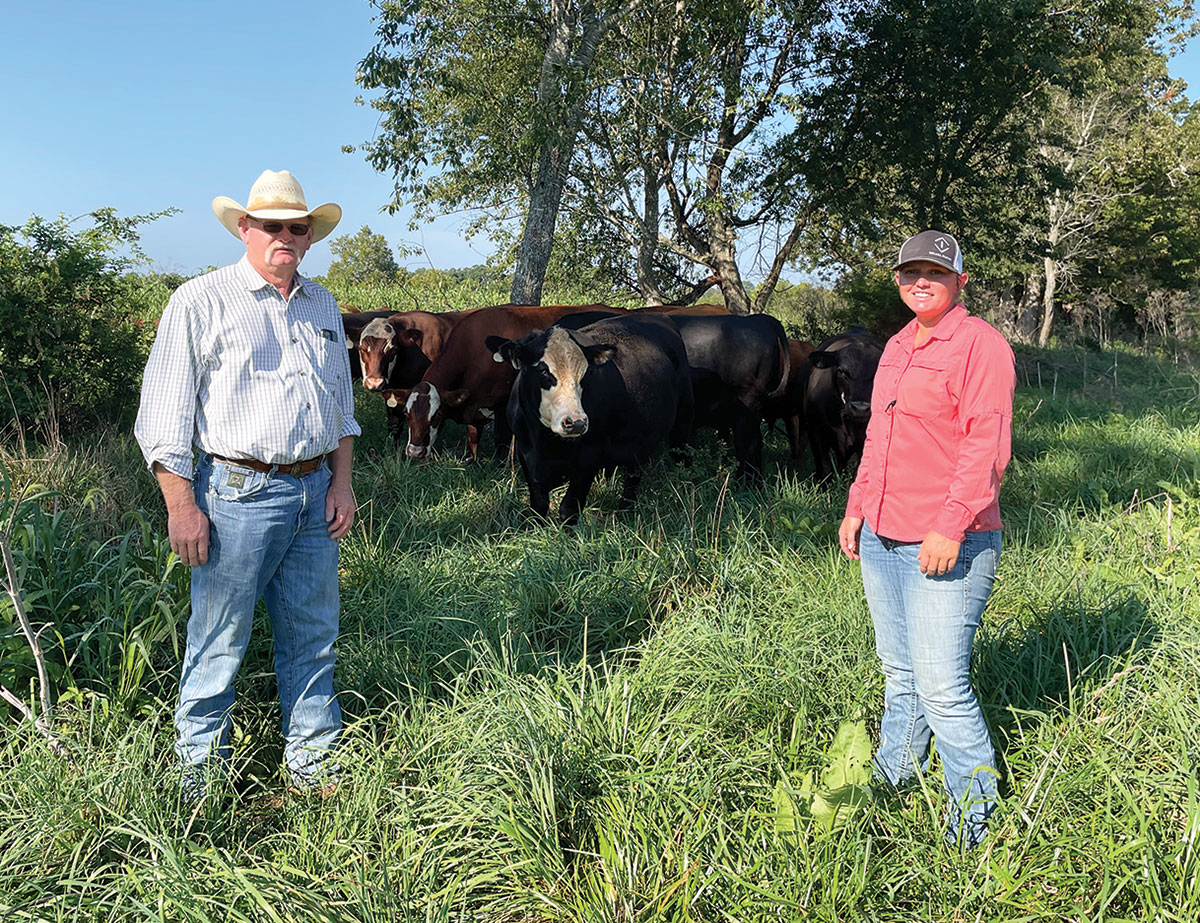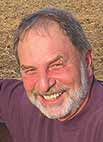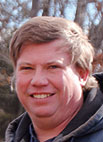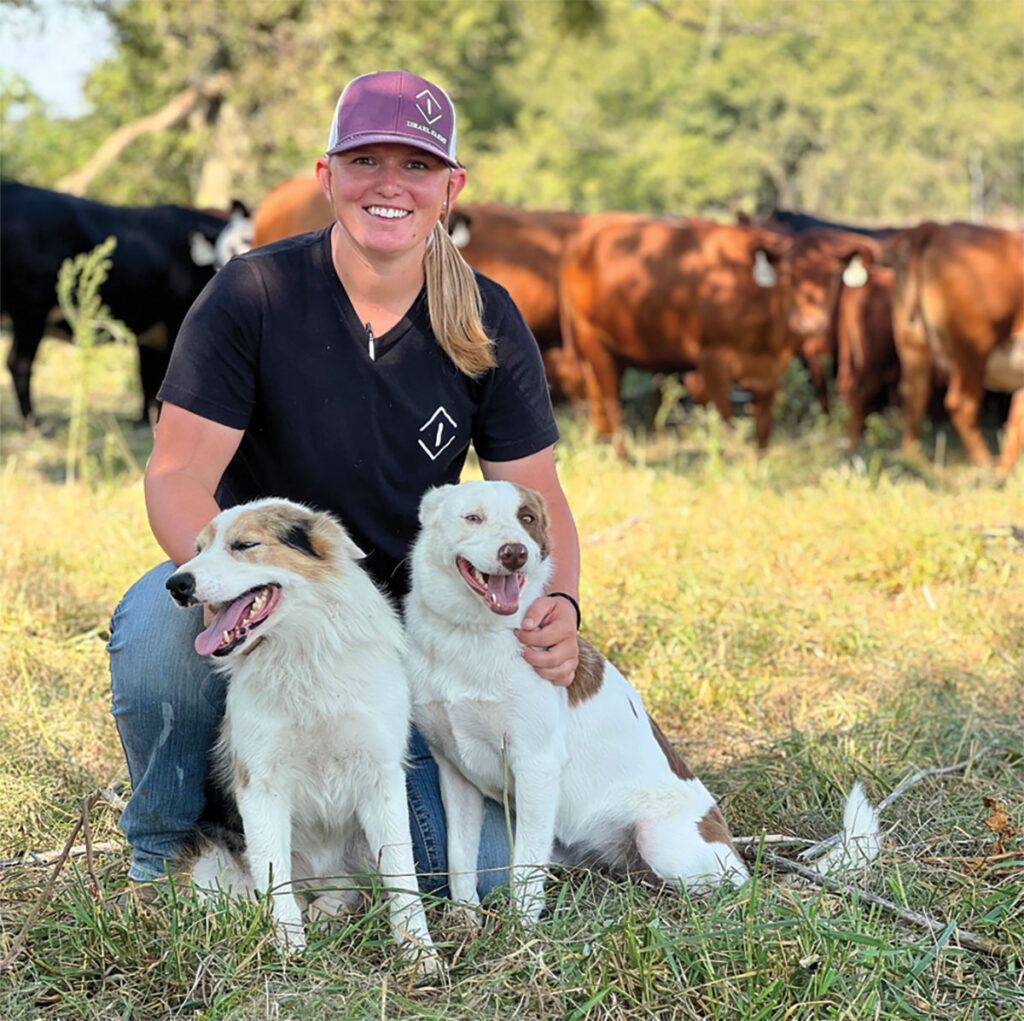
Diamond I Cattle Co., partners with nature
CRANE, MO. – Larry and Riley Israel are the father and daughter partners in the Diamond I Cattle Company near Crane, Mo.
Larry, 60, works off the farm selling custom cabinets while Riley is the on-site manager for their cattle operations.
“She does most of the work,” Larry noted approvingly.
Riley has spent nearly all her 27 years dedicated to learning the cattle business.
“She followed me from the time she could walk,” recalled Larry. “By the time she was 8, Riley was inoculating (something they no longer do) and putting in ear tags.”
Riley also picked up some of her knowledge working for other farms until she graduated from high school. But working with and watching her father implement the rotational grazing systems the way he did and seeing how well those practices worked led her to believe in raising cattle naturally.
The popularity and demand for the South Poll breed is partly because of the heat tolerance and maternal instincts of the momma cows.
“We liked the smaller frame. A more compact animal,” Riley said.
Riley and Larry were also attracted to South Poll cattle because their slick hides add to their heat tolerance and diminish the presence of flies and other pests. The Israel cattle are not treated with pesticides or deworming medications. The Diamond I operation doesn’t source animals from other herds.
“We know everything about all these animals,” Riley said of the closed herd.
The Israels bought their current 180-acre farm in 2007.
“It was an old dairy farm,” recounted Larry.
Additionally, the Israels lease approximately 1,900 acres all within 10 miles of their Crane property. Even so, the Israels transport their cattle as little as possible to keep the animals’ stress levels low. Diamond I started running South Poll cattle in 2016.
The Israel partners currently run an average of 350 to 400 total head. Before introducing the South Poll breed most of the Diamond I animals came from stock out of the Pharo Cattle Company in Colorado. The Israels were predisposed to begin raising South Poll cattle by the Pharo ethic which is, “While everyone else is focused on increasing pounds per animal (bragging rights) we are focused on increasing more pounds per acre (profit).”
Larry noted, on average, the Diamond I butcher ready stock finish out at about 1,100 pounds.
The Diamond I partners only breed during a 45-day calving window beginning each April. Riley and Larry clarified that calving in the spring is what works for them and that other operations are not wrong when they’re doing it differently.
“It’s what works for us,” Larry said. By narrowing the breeding cycle to 45 days, they are better able to identify and retain their most fertile females, one of the most desirable traits sought by those developing a South Poll herd. Diamond I exposed 185 females this spring.
“Going to that tight calving window is part of our culling process. If they don’t breed up in that 45 days, they don’t get another chance,” Larry said. “Every momma cow in the Diamond I herd has calved every year, weaned every year, and has bred back every year. Last year, they had 92 percent of mommas and 87 percent of their heifers bred up. Those females that don’t take during the spring are culled and sold to other operations.”
The Israels became dedicated to rotational grazing in 2008. Seeking to run more cattle and better manage their forage. Riley and Larry worked with the Missouri Natural Resources and Conservation Service to design and implement programs and practices that were beneficial to the land as well as their bottom line.
“We haven’t bought any fertilizer since 2008,” Larry said. One of the primary rotational grazing principals is to never let the cattle eat the forage down too short. There are times when Riley and Larry are trying to get more legumes or clovers or other specific growth to flourish in a certain pasture where they will allow the taller grasses to be eaten down more.
In August, they hosted the Adaptive Grazing: Implementation and Observation Field Day put on by Understanding Ag with support from the U.S. Environmental Protection Agency and the Missouri Department of Natural Resources. Larry said he heard one of the attendees ask a member of the field day team how often they saw this quality of grass finished beef, referring to the Israel herd.
“The guy just shook his head and said, ‘We don’t.’ So that really made us feel good,” Larry said.
Another positive and productive outcome of the Diamond I regenerative forage practice is water retention in the soil. And the root systems of retained plant life prevents erosion. Supporting natural moisture retention also prevents erosion because the plant root systems are healthy and deep.
“The way we leave our grass, it recovers quicker and can take on so much more water,” Riley said. “It picks up more nutrients.”
Keeping the ground armored with plant cover allows their ground temperature to be cooler in the summer and warmer in winter. “So our growing season may start earlier in the spring,” Larry suggested. “It will last longer in the fall because we’ve retained that moisture and we’ve got warmer soil.”
“There’s a reason for what we plant and why we plant it together,” Riley said. “All these plants pull different nutrients out of the ground.”
The different plants feed off each other and are ready at different times throughout their growing seasons. They might graze some animals through one time in what’s primarily Sudan, but as other plants mature the Israel cattle are rotated elsewhere, spending only a day or two in each field and ensuring that the forage offered is diverse and able to support another rotation later in the season.
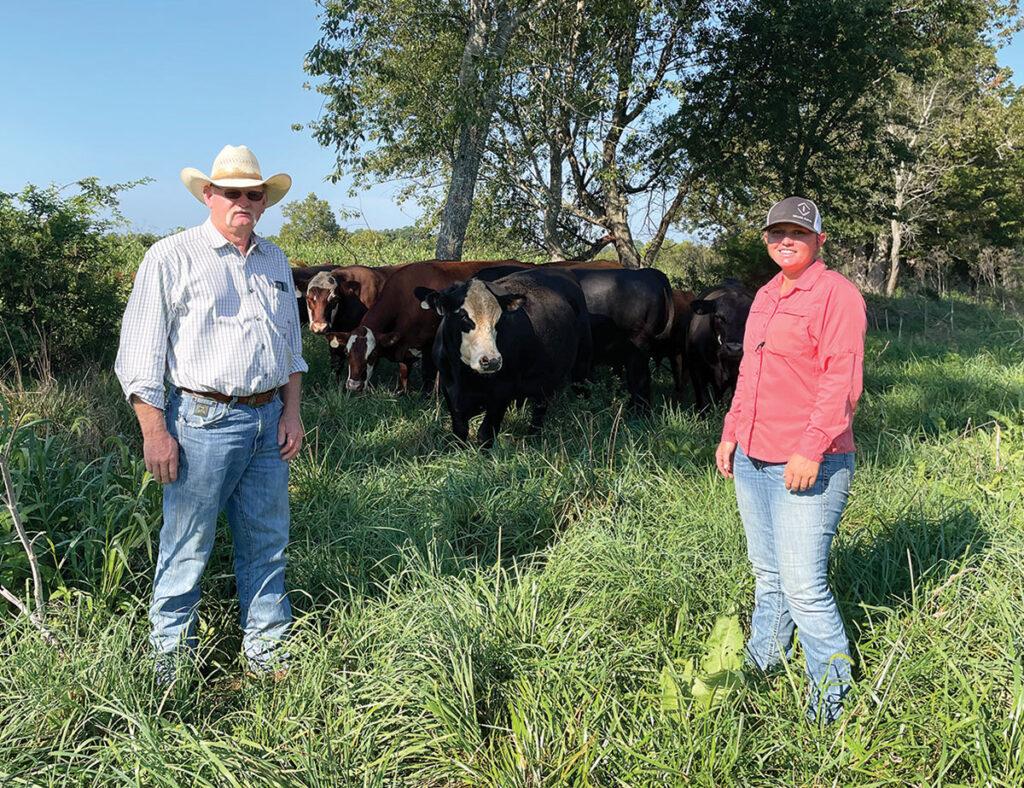
The Israels work with the Green Cover Seed company to plan the mixtures for their forage. The Israels want to both build the soil as well as get good performance from their cattle. “We like diversity,” Larry said.
There are nine different forages planted in their Sudan-based, warm-season areas. Once the warm season areas are grazed down, they will seed back with a cool season mixture of hairy vetch, berseem clover, black oats, barley, purple top turnips and collards. They also have a 10-acre pasture of native warm season grasses that include big and little bluestem, Indiangrass and sideoats.
“If we didn’t have that winter mix, we couldn’t finish animals year-round,” related Riley. “We butcher animals every month, but our cover crops are the only way we can do it.”
Riley emphasized the difference between “grass fed” and “grass finished” as a distinction that conscientious consumers need to clearly understand.
While observing that finishing can be done on fescue or by other means, Riley said, in her opinion, the forages the Israel cattle finish on gives their meat a distinctively better taste.
“It’s how they work. It’s how they gain, and how they sustain,” she said. Regardless of what forage they are eating, the Diamond I cattle are provided minerals via a segmented feeder. Riley said the animals instinctively balance their gut.
“We do a cafeteria style, free choice,” Riley said. “They know what they need, and they won’t overeat.”
Cattle naturally seek variety and at different times will eat certain plants and leave others alone.
Recently the cattle were turned into a field that had giant rag weed and they went right for those plants. “They love giant ragweed,” said Riley. So instead of trying to kill it as is a common practice, Diamond I allows the ragweed to grow. Riley also noted that in the choices of minerals the cattle consume, “It tells you a lot about your soil as well.” And, added Larry, “Ninety percent of what goes through cattle goes back out on the farm.” Over the years the Israels have seen that natural rotation of elements produce positive outcomes in their fields.
“We try to work with nature and not against nature as much as possible,” stated Larry. Plants mature at different times across the seasons, and that is the reason the Israels concentrate on diversity in their cover crops and pasture rotations. “It’s doing it how it should be done,” opined Riley about why she has taken their herd in the directions they have. “I just believe in it.” The Israels take special care to acknowledge that raising and finishing cattle can and are done differently and successfully, but the Diamond I processes are in her words, “How we want it done.”
“We used to spend a lot of money on fertilizer and hay, and it didn’t pencil out,” Larry said. Before they started rotational grazing the Israels put out 640 round bales of hay one winter. Three years later, after managing their pastures in rotation they only fed 150 bales to the same number of cattle. By the fourth year they only fed 50 bales.
“And that was mostly in the weaning pen,” observed Larry. Now, they wean in the pasture.
Through their intense management, the Israels can graze not only their own herd, but offer custom grazing for about 100 head.
There is one other secret to the Diamond I success that has nothing to do with cattle breeds. It is connected to rotating the cattle among their different pastures, however; dogs. Jasper the Border Collie is no secret around Crane.
“He’s pretty well known,” said Riley with a grin. Larry introduced herding dogs to their operations when Riley was just a child.
“I think that dog taught us as much about working cattle and stockmanship as anybody,” Larry recalled. Riley got Jasper when he was 8 weeks old. Now at age 7, he is her constant companion. Even in the pens when she needs to sort cattle, Riely can stand at the gates and Jasper will help sort the animals.
“I’d hate to do any cattle work without one,” Riley said. “Once you’ve had a good dog, they’re just hard to beat.”
The Diamond I brand continues to grow by word of mouth from repeat customers. Riley posts on social media.
“For the most part somebody buys and really likes it, and they tell (others) and they call and want some.” Riley said.
She keeps a limited quantity of meats in their freezer in Crane for those folks who might want smaller amounts of choice cut, grass-finished South Pole beef.
“We get more and more people contacting us that want that ‘off the farm, healthy, antibiotic and hormone free (meat),” Larry said.

